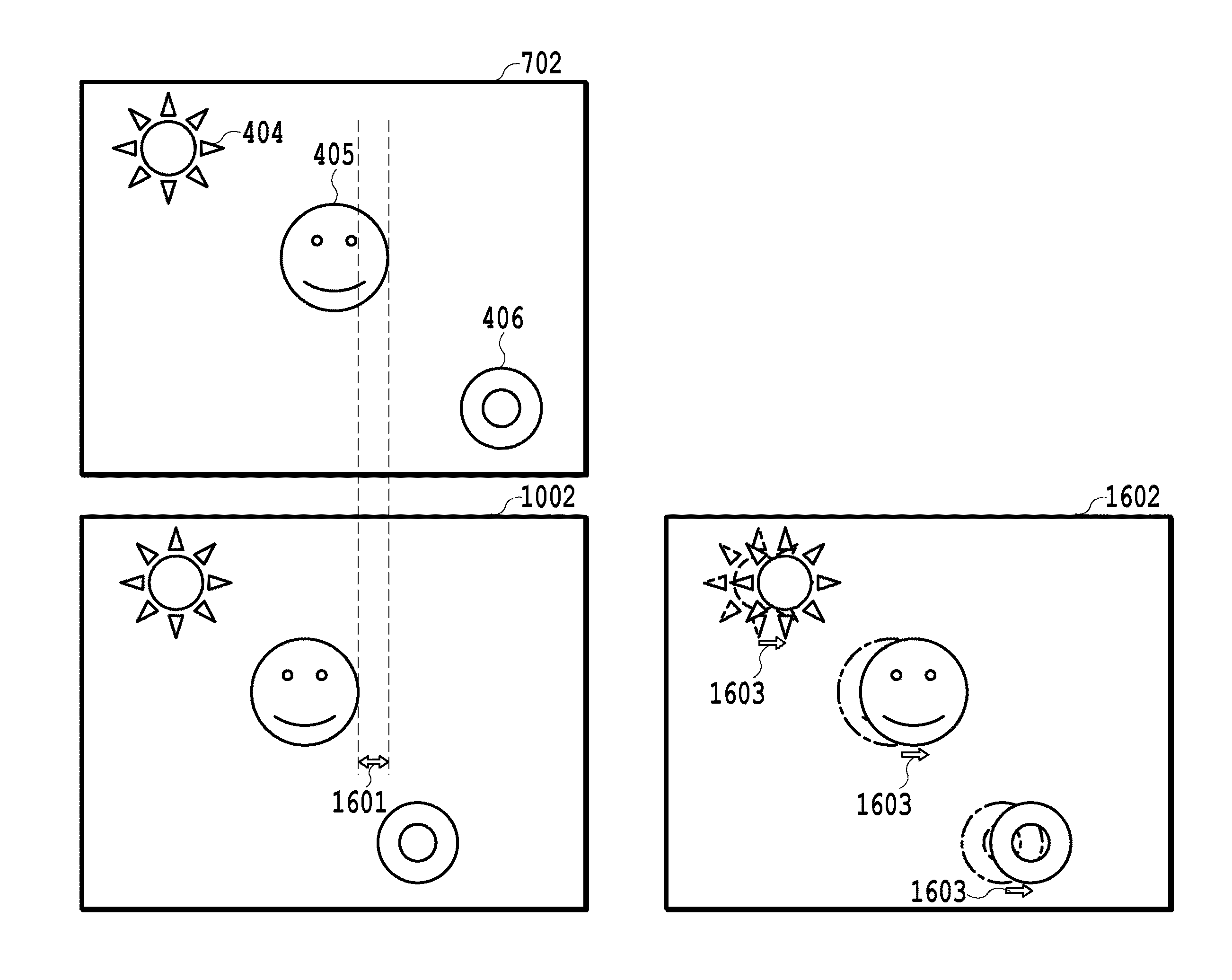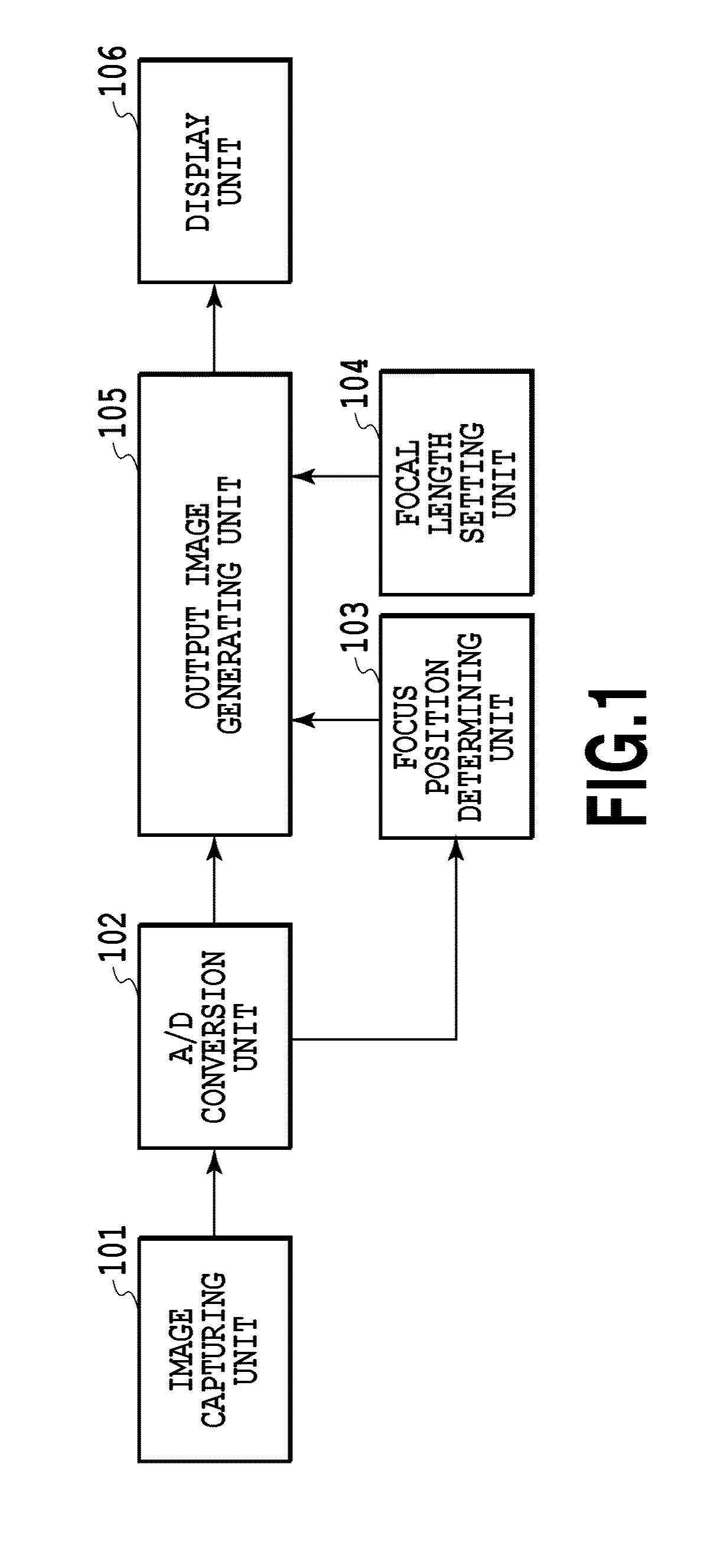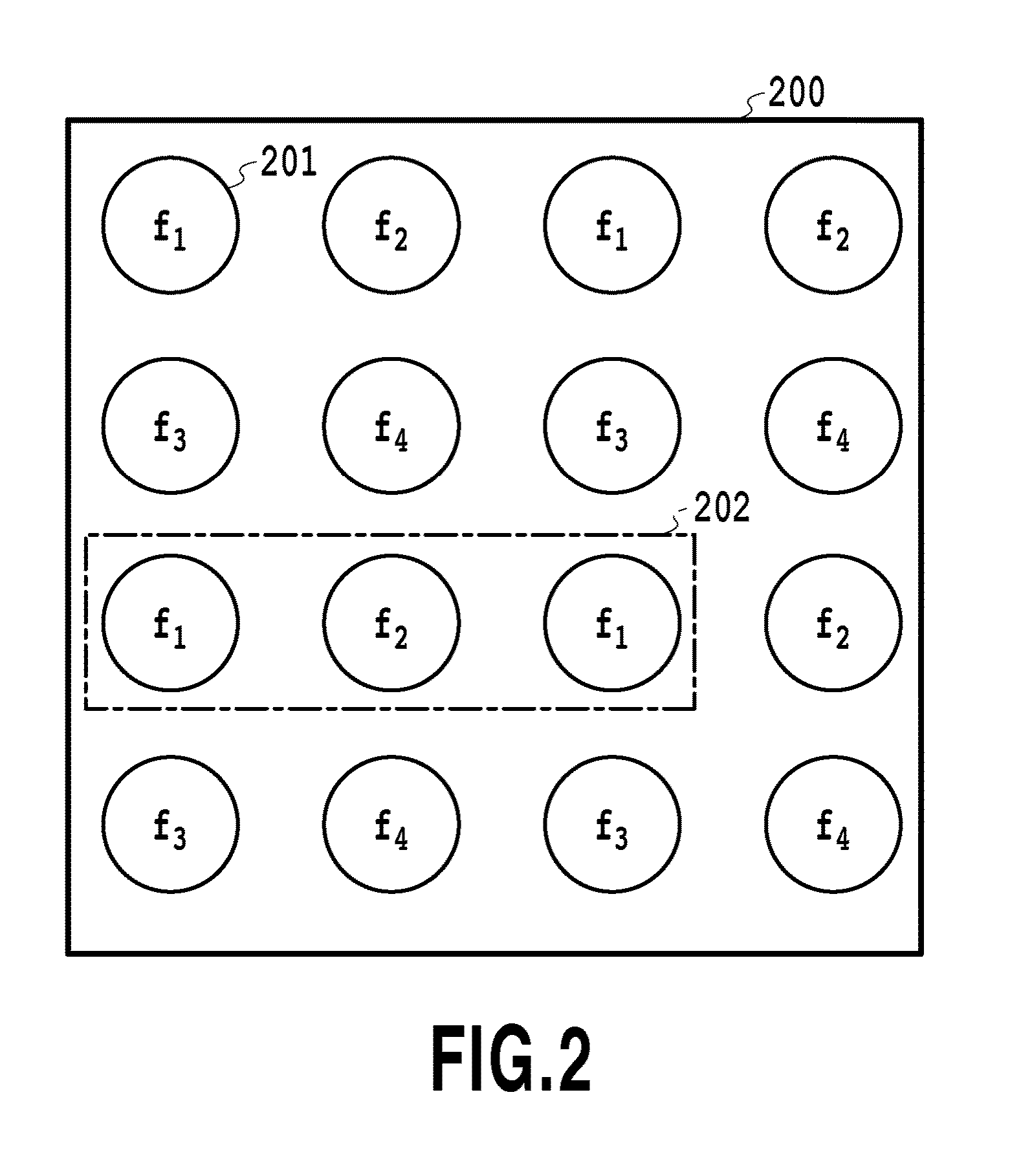Image processing method and device, and program
a technology of image processing and image quality, applied in the field of image processing methods and devices, can solve the problems of low image quality and low precision of the completed combined image, and achieve the effect of high quality and high precision
- Summary
- Abstract
- Description
- Claims
- Application Information
AI Technical Summary
Benefits of technology
Problems solved by technology
Method used
Image
Examples
first embodiment
[0045]FIG. 1 is a diagram showing essential components of an image capturing device according to a first embodiment.
[0046]An image capturing unit 101 includes a zoom lens, focus lens, camera-shake correction lens, stop, shutter, optical low-pass filter, IR cut filter, color filter, and image sensing elements (sensor), such as CMOS and CCD, and is configured to detect an amount of light of a subject. Note that, the image capturing unit 101 in the present embodiment is a camera array with different focal lengths which is capable of simultaneously capturing a plurality of images from different viewpoints and in which a plurality of single cameras having two or more kinds of focal lengths exists mixedly.
[0047]An A / D conversion unit 102 converts an amount of light of a subject detected by the image capturing unit 101 into a digital value and sends a digital signal (digital image data) to an output image generating unit 105.
[0048]A focus position determining unit 103 determines a focus po...
second embodiment
[0128]In the first embodiment, the aspect is explained, in which image combination is performed using only the image data captured by the single cameras with a focal length equal to or less than the output focal length. Next, an aspect is explained as a second embodiment, in which image combination is performed using image data captured by all the single cameras regardless of the length of the output focal length. Explanation of parts common to those of the first embodiment is simplified or omitted and here, different points are explained mainly.
[0129]In the present embodiment, in the use image manipulation processing at step 505 of the flowchart of FIG. 5, regardless of the output focal length that is set, resolution conversion in accordance with necessity is performed on image data captured by all the single cameras configuring the camera array with different focal lengths.
[0130]FIG. 20 is a diagram for explaining the way of resolution conversion in the present embodiment.
[0131]A ...
third embodiment
[0134]Next, an aspect is explained as a third embodiment, in which a filter is applied to each image to further reduce a blur. Explanation of parts common to those of the first and second embodiments is simplified or omitted and here, different points are explained mainly.
[0135]FIG. 22 is a diagram showing an example of an internal configuration of an output image generating unit 2200 according to the present embodiment. In comparison with the output image generating unit 105 according to the first embodiment (see FIG. 3), it is known that a filter applying unit 2201 is added to the output image generating unit 2200 according to the present embodiment.
[0136](Filter Applying Unit)
[0137]FIG. 23 is a diagram showing an example of an internal configuration of the filter applying unit 2201.
[0138]The filter applying unit 2201 includes an image buffer 2301, a filter diameter deriving unit 2302, an application determining unit 2303, a coefficient deriving unit 2304, and an arithmetic operat...
PUM
 Login to View More
Login to View More Abstract
Description
Claims
Application Information
 Login to View More
Login to View More - R&D
- Intellectual Property
- Life Sciences
- Materials
- Tech Scout
- Unparalleled Data Quality
- Higher Quality Content
- 60% Fewer Hallucinations
Browse by: Latest US Patents, China's latest patents, Technical Efficacy Thesaurus, Application Domain, Technology Topic, Popular Technical Reports.
© 2025 PatSnap. All rights reserved.Legal|Privacy policy|Modern Slavery Act Transparency Statement|Sitemap|About US| Contact US: help@patsnap.com



